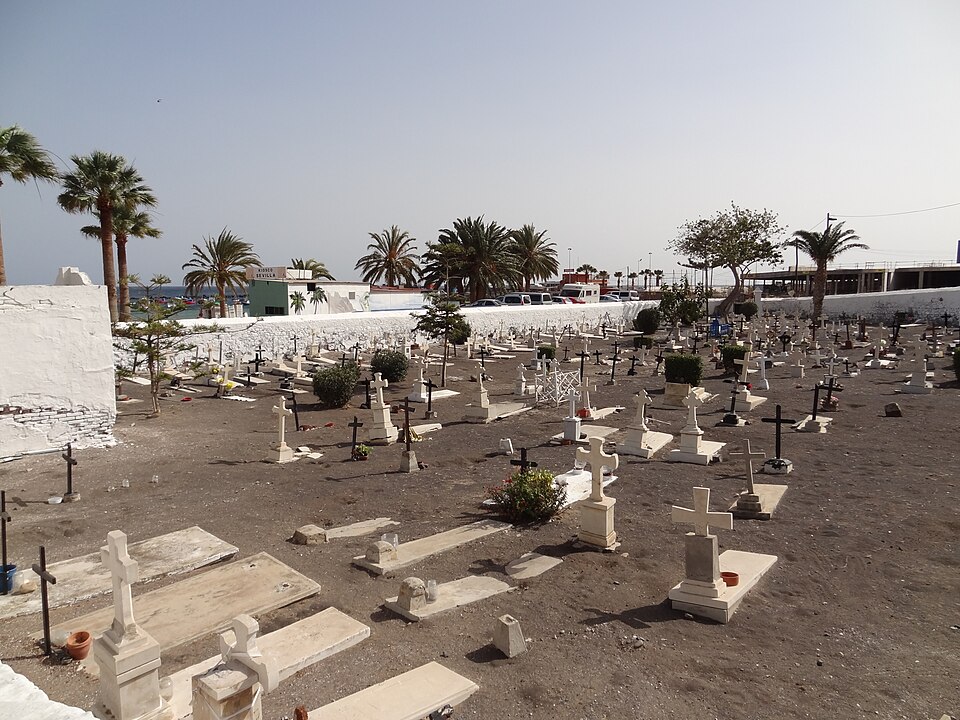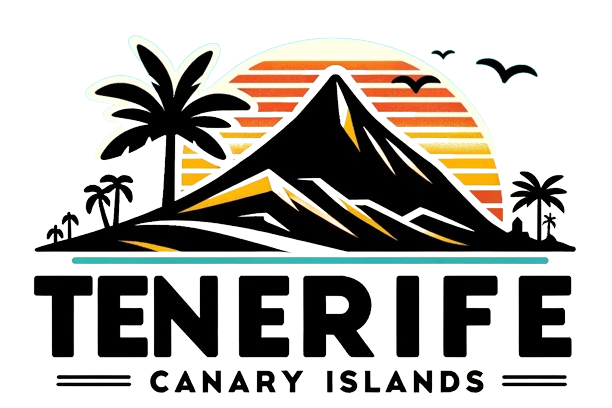Tucked against the golden sands of Las Teresitas Beach and overshadowed by the rugged Anaga Mountains, San Andrés Cemetery in Tenerife whispers tales of colonial resilience, indigenous roots, and modern cultural intrigue. This modest, abandoned necropolis—dating back over a century—stands as a poignant counterpoint to the island’s sun-drenched tourism, where weathered tombstones meet the Atlantic’s gentle roar. No longer in active use since the early 20th century, it draws taphophiles, photographers, and history seekers for its eerie beauty and unexpected rock ‘n’ roll lore. As All Saints’ Day approaches on November 1, 2025, local efforts to preserve this site underscore Tenerife’s blend of reverence and renewal. Explore its origins, U2 connection, and visitor tips in this guide to one of the Canary Islands’ most atmospheric hidden gems.

Echoes from the Past: The Historical Foundations of San Andrés Cemetery
San Andrés village, founded around 1497 as one of Tenerife’s oldest settlements, cradles a rich tapestry of Guanche and Spanish heritage. The cemetery, often called the Traslarena Cemetery in its heyday, emerged in the late 19th century as the primary burial ground for the coastal community, serving fishermen, potters, and early tourists until around 1916. Graves were sunk directly into the sandy soil—unlike the stacked niches in larger Tenerife necropolises—creating a low-profile layout that blends seamlessly with the beachfront dunes.
Pre-conquest, the area hummed with Guanche life; nearby caves housed mencey Beneharo, ruler of Anaga, and yielded the famed Mummy of San Andrés, a preserved body now at Santa Cruz’s Museum of Nature and Man. Post-1496 Spanish arrival, the site symbolized transition: Burials shifted from churchyards like Nuestra Señora de la Concepción to this open-air expanse, reflecting growing populations and hygiene reforms. By the 20th century, as Santa Lestenia’s grander cemetery opened in Santa Cruz, San Andrés faded into disuse, its over 200 graves left to the elements—broken stones, faded inscriptions, and tiny crib-like markers for infants evoking quiet tragedies of maritime perils and childhood losses.
This coastal perch wasn’t mere convenience; it honored the sea’s dual role as livelihood and peril, with many interred souls tied to the waves. Today, it’s a protected cultural echo, though lacking formal patrimonial status, sustained by community zeal rather than official decree.
Architectural Serenity: Design and Atmosphere Amid the Waves
What sets San Andrés Cemetery apart is its unpretentious design, a far cry from ornate European graveyards. Spanning a compact plot adjacent to Las Teresitas—famed for its Saharan-imported golden sand—the site features simple, ground-level tombs etched with family names, dates, and crosses weathered by salt spray. No towering mausoleums here; instead, the layout invites wandering paths lined with hardy coastal scrub, where waves provide a perpetual soundtrack.
The atmosphere defies gloom: Sunlight filters through palm fronds, casting dappled shadows on volcanic-blackened stones, while the beach’s azure horizon softens any melancholy. Photographers adore the juxtaposition—crumbling cribs against crashing surf, evoking timeless cycles of life. Unlike Tenerife’s multi-level “high-rise” niches in places like Puerto de la Cruz, this horizontal humility mirrors the island’s humble fishing roots. Occasional wildflowers and seashells left by locals add touches of ongoing tribute, transforming it into a serene meditation spot rather than a somber vault.
Cultural Spotlight: U2’s Achtung Baby and the Cemetery’s Rock Legacy
In February 1991, amid Santa Cruz’s Carnival frenzy, Irish rock icons U2 descended on Tenerife for inspiration, scouting locations that infused their seminal album Achtung Baby with raw, otherworldly vibes. The band’s jaunt to San Andrés and Las Teresitas Beach culminated in iconic promo photos at the cemetery—Bono and crew amid the tombstones, channeling themes of rebirth and rebellion against a backdrop of faded grandeur. These images, shot on the eve of the Gulf War, captured the site’s desolate magic, blending Atlantic isolation with Berlin Wall-era introspection.
Fans still pilgrimage here, tracing the exact spots from the Achtung Baby booklet, where the cemetery’s sandy graves mirrored the album’s sonic reinvention. This serendipitous link elevates San Andrés from local footnote to global footnote in music lore, drawing U2 devotees who mingle with hikers exploring nearby Anaga trails. It’s a reminder of Tenerife’s pull on creatives—much like Teide’s lunar plains inspired sci-fi, this necropolis fueled rock’s evolution.
Preservation Efforts: Community Guardianship in 2025
Though abandoned, San Andrés Cemetery endures through grassroots passion. The El Pescador Neighborhood Association leads annual clean-ups, replacing weathered wooden crosses—40 new ones installed in October 2021, with similar drives planned for All Saints’ Day 2025. These volunteers combat weeds, erosion, and oblivion, tending to 200+ unmarked graves while petitioning Santa Cruz City Council for formal rehab, promised post-San Rafael and San Roque restorations.
No official protection shields it yet, but community-led initiatives align with Tenerife’s REGENERATe ethos, using eco-materials for crosses and educating on Guanche ties. In 2025, expect enhanced signage and guided walks tying the site to Las Teresitas’ history—vital as tourism swells, ensuring this slice of heritage isn’t lost to coastal development.
Visiting San Andrés Cemetery: Practical Tips and Nearby Treasures
Access is effortless: From Santa Cruz, hop TITSA bus 910, 945, or 946 (10-15 minutes, €2.35 one-way) to San Andrés stop, then a 5-minute stroll to Las Teresitas. Drive via TF-115 for free beach parking; the cemetery hugs the northern edge, open 24/7 with no entry fee—respectful silence encouraged.
Best times: Dawn for misty solitude or dusk for golden-hour photos (avoid high tide to prevent wave encroachment). Pack water, sunscreen (UV spikes near water), and sturdy shoes for sandy paths. Pair with beach lounging, Anaga hikes (Trail PR-TF 9 starts nearby), or the 16th-century Iglesia de San Andrés for mementos.
Pro tip: Download the U2 Achtung Baby playlist for an immersive wander—turn graveside reflection into a concert encore. Families: It’s child-friendly for short visits, but explain the site’s quiet dignity.
San Andrés Cemetery proves Tenerife’s layers run deep: Where sea meets stone, history hums with unexpected harmonies. Venture beyond the beaches, and uncover the island’s soulful undercurrent.
